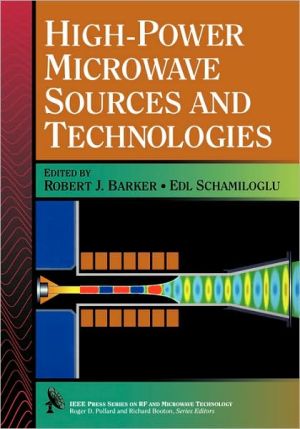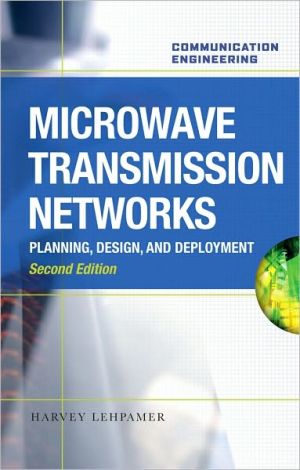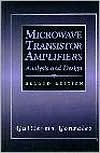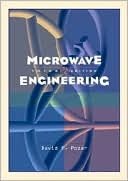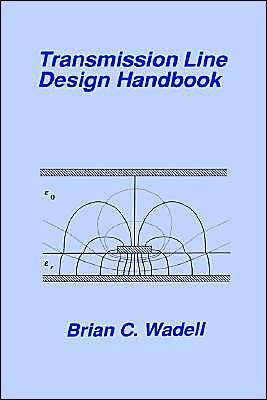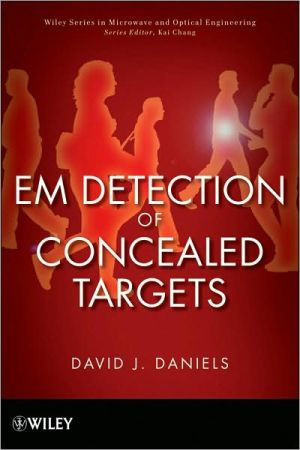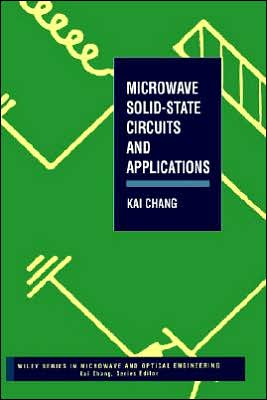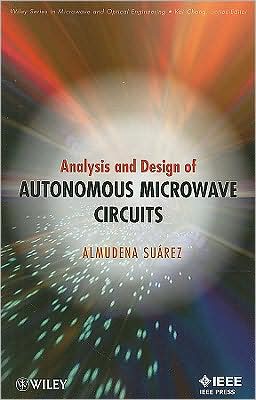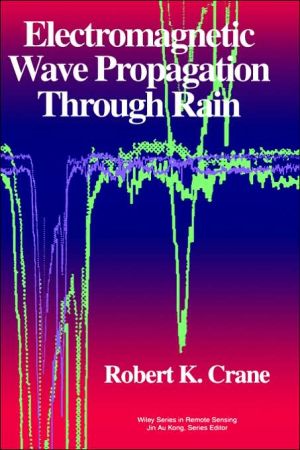High-Power Microwave Sources
Electrical Engineering High-Power Microwave Sources and Technologies A volume in the IEEE Press Series on RF and Microwave Technology Roger D. Pollard and Richard Booton, Series Editors Written by a prolific group of leading researchers, High-Power Microwave Sources and Technologies focuses primarily on the high-power microwave (HPM) technology most appropriate for military applications. It highlights the advances achieved from 1995 to 2000 as the result of a US Department of Defense (DoD)...
Search in google:
High-Power Microwave Sources and Technologies focuses primarily on the high-power microwave (I IPM) technology most appropriate for military applications. It highlights the advances achieved from 1995 to 2000 as the result of a US Department of Defense (DoD) funded, $15 million Multidisciplinary University Research Initiative (MURI) program. The grant created a synergy between researchers in the DoD laboratories and the academic community, and established links with the microwave vacuum electronics industry, which has led to unprecedented collaborations that transcend laboratory and disciplinary boundaries. Booknews The book's focus is on the history, state-of-the-art, and possible futures of high-power microwave (HPM) sources and technologies, which are of interest to the Department of Defense for military applications. Editor Barker is with the U.S. Air Force Office of Scientific Research, and Edl Schamiloglu is in the electrical and computer engineering department at the U. of New Mexico, Albuquerque; the 12 chapters are written by high-powered contributors, mainly from military laboratories and universities in the U.S. They cover gigawatt-class sources, pulse shortening, relativistic Cerenkov devices, and gyrotron oscillators and amplifiers, among other topics. A glossary of abbreviations and acronyms fills five pages. Annotation c. Book News, Inc., Portland, OR (booknews.com)
This book presents a snapshot in time of the status of research on high-power microwave (HPM) sources and technologies in the United States circa 1999. The focus of this book is on HPM topics that are of particular interest to the U.S. Department of Defense (DoD). In fact, much of what is presented herein are the results of highpower narrowband source research that has been sponsored by, or closely aligned with the DoD Multidisciplinary University Research Initiative (MURI) to investigate novel high-energy microwave sources. By closely aligned we mean research that was performed internationally, yet whose results were shared in a common forum among the scientists with significant interaction having taken place. This MURI program officially came into existence in 1995, was funded at a rate of U.S. $3M/year, and ended in the Spring of 2000. It was established on a foundation of more 'than a decade of microwave research efforts funded by the plasma physics office of the Air Force Office of Scientific Research (AFOSR) where one of us (RJB) is program- manager. It is also synergistic with the ongoing Tri-Service Vacuum Electronics Intitiative led by Robert Parker of the Naval Research Laboratory (NRL), as well as with AFOSR and the Air Force Research Laboratory - Rome Laboratory Site's former Advanced Thermionic Research Intitiative (ATRI).\ Under the auspices of the MURI program, HPM scientists at nine U.S. universities have been conducting research projects under three Consortia led by Magne Kristiansen at Texas Tech University (Lubbock), Victor Granatstein at the University of Maryland (College Park), and Neville Luhmann at the University of California (Davis). The other university participants include the other coeditor (ES) at the University of New Mexico (Albuquerque), John Nation at Cornell University (Ithaca), Ned Birdsall at the University of California (Berkeley), George Caryotakis at Stanford University (Stanford Linear Accelerator Center), Ronald Gilgenbach at the University of Michigan (Ann Arbor), and Tony Lin at the University of California (Los Angeles). To facilitate the rapid transition of research results into the industrial community, formal collaborative subcontracts were established with James Benford (Microwave Sciences), Carter Armstrong (Northrop-Grumman), and Howard Jory (CPI). Furthermore, cooperative ties were strengthened with the ongoing HPM research and development efforts at the Air Force Research Laboratory-Phillips Research Site (Kirtland Air Force Base, NM) first under the coordination of Jack -Agee and later through the liaison efforts of John Gaudet.\ The first chapter of this book orients the subject matter, defines needed terminology, and describes the underlying structure of the presentations. Following that introduction in Chapter 1, Chapter 2 presents HPM source research in the broad context of DoD interest in rf sources. Chapters 3 to 6 present advances in HPM sources and a better understanding of the pulse-shortening issue that has received a great deal of attention. Chapters 7 to 11 present advances in enabling technologies that are essential not only to achieve a better understanding of the physics of HPM sources, but also to make HPM practical. Finally, alternate approaches to achieving HPM and future challenges in this nascent area of research are described" in Chapter 12.\ 2.3 DOD NEEDS\ The U.S. Department of Defense requires improved capabilities in countering artillery fire, ship defense against cruise missiles, aircraft self-protection., suppression of enemy integrated air defense systems, space control, security, counterproliferation, and disruption or destruction of command and control assets. All of these requirements potentially can be addressed by HPM weapon systems that upset or damage the electronics within the target. HPM weapons offer military commanders the option of [7]:\ \ Speed-of-light, all-weather attack of enemy electronic systems.\ Area coverage of multiple targets with minimal prior information on threat characteristics.\ Surgical strike (damage, disrupt, degrade) at selected levels of combat. Minimum collateral damage in politically sensitive environments.\ Simplified pointing and tracking.\ Deep magazines (meaning long operating time without replenishment) and low operating costs.\ \ Coordinated Air Force, Army, and Navy, and DTRA HPM transition plans focus on demonstrations of mission-oriented concepts: aircraft self-protection, antiship missile defense, and countermunitions. The potential for applications includes a wide range-EW electronic attack-degrade/neutralize enemy defenses, lethal suppression of enemy air defense (SEAD), Command and Control Warfare and Information Warfare (C2W/IW), precision application of force, Military Operations in Urban Terrain (MOUT), and so on. Potential warfighter payoffs include generic protection against a wide variety of missile/munitions threats (infrared, electro-optical, radar, and laser-guided), improved effectiveness and lower attrition rates of friendly systems, and negation (permanent damage, long-term disruption, and temporary degradation) of enemy command, control, and general information systems. Finally, electronic protection techniques developed under the HPM program can be transitioned to users in order to harden U.S. systems against hostile HPM weapons, or inadvertent EMI/ EMC, that is, electromagnetic interference/compatibility, problems. Joint development and test projects demonstrate the maximization of inestments to meet individual service/agency mission requirements.\ The major technical challenges for HPM weapons include developing and demonstrating [7]:\ \ Compact, high-peak-power or high-average-power HPM sources.\ Compact, high-gain, ultra-wideband (UWB) antennas.\ Compact, efficient, high-power, pulsed power drivers.\ Compact, efficient prime power sources.\ \ \ Predictive models for HPM effects and lethality.\ Low-impact hardening of systems against hostile and self-induced ElectroMagnetic Interference.\ Affordable system integration meeting military platform requirements.\ \ DoD organizations have primary responsibility for the development and applica tions of HPM technology. However, both DoE and private sector efforts complement military HPM programs. Lawrence Livermore National Laboratory (LLNL), Los Alamos National Laboratory (LANL), and Sandia National Laboratories (SNL) have HPM source development and effects programs that directly support service efforts. The development of the Split Cavity Oscillator (SCO) [8] is an example of the benefits of such coordinated effort. This first HPM source, compact enough to fit on an aircraft, was funded jointly by the Air Force, the Army, and DoE through SNL. Such coordination has been accomplished through the Tri-service Technology Panel for Directed Energy Weapons for nearly two decades. In the early 1980s, the Program Implementation Panel was formed to accomplish for HPM technology what became a Reliance process affecting many technologies in the early 1990s. When the Reliance process was initiated, it was already effective for HPM, and benefits from it included providing to DoD and the Congress a technology for which questions about coordination or duplication of effort were demonstrably not an issue. This approach was helpful in attracting funding to the HPM program. The private sector has evolved both independent and cooperative rf effects programs. Cooperative Research and Development Agreements (CRDAs) have been initiated to develop and transition improved techniques for measuring electromagnetic interference. The electronics industry as a whole is working closely with the services to ensure compliance with new international standards for EM protection [7].\ Basic research efforts for HPM emphasize the fundamental understanding of the limitations of microwave technology and its application, and the investigation of promising new approaches and concepts. Efforts are conducted in rf sources, antennas, pulsed power systems, and rf effects phenomenology.\ 2.4 HISTORY\ One view of HPM is narrowly defined as a combination of pulsed power technology with nonthermionic cathodes (usually field emission sources). This form of HPM had its genesis in experiments at Cornell University by Nation et al. in 1970 [9], at the Radiophysical Research Institute in Gorky (Nizhny Novgorod), and at the Lebedev Institute in Moscow [10]. In all these cases the device studied was a backward wave oscillator (BWO: see Chapter 5). The experiments of Kovalev et al. [10] were repeated by Carmel et al., and yielded power of about 300-500 MW in X-band with pulse width of 50 ns [11]. The earliest research in the United States was funded by the NSF. At about that time, research was also initiated at the Naval Research Laboratory (NRL) on gyrotrons and free electron masers [12]. In 1975, experimenters from Cornell and NRL combined to carry out electron cyclotron maser experiments at 3-5 MV and generated powers of 1 GW in X-band, albeit at low efficiency [13].\ Work in the Soviet Union progressed rapidly in the 1960s and 1970s with Gaponov's group (Gorky) leading the way. Also in the 1970s, a substantial research program developed in the United States, spearheaded by the group at NRL [14]. In the accelerator community, the development of the klystron was funded by DoE and carried out at the Stanford Linear Accelerator Center (SLAC). This work, ongoing since the 1960s, resulted in high-power, hard tube, 4 S-bands devices. These tubes, which used thermionic cathodes and conventional- modulators, yielded microsecond pulses with output powers in tens of megawatts. In addition, since the mid-1980s the DoE has supported a wide range of HPM research in universities and national laboratories ranging from TWT amplifiers in X-band (8-12.5 GHz) to gyrotron research at frequencies in excess of 17 GHz [15]. All of these programs are directed toward the production of phase stable amplifiers, with current activities directed at Ka-band (26.5-40 GHz) and higher frequencies.\ HPM research in the United States received a large boost in the mid-1980s with the advent of the SDIO program administered by Brandt at the U.S. Army Harry Diamond Laboratories (HDL). This program funded several landmark sources including Friedman's relativistic klystron [16, 17] and the AURORA reflex diode [18]. These sources generated multi-gigawatts in X-band and L-band (1-2 GHz), respectively. Researchers at AFRL and at universities participating in the HPM MURI Program described earlier further developed the relativistic klystron in the mid-1990s. Since HPM sources present similar technical challenges as sources for linear accelerators and the heating of magnetically confined plasmas for fusion research, the DoE-supported research in universities and national laboratories has contributed to advancing the state-of-the-art in HPM devices. Examples are DoE-supported research on gyrotron devices at the University of Maryland and the University of California at Davis (UCD), BWOs and traveling wave tubes at Cornell University, klystron and gyrotron work at MIT, and research on rf breakdown at SLAC. At SLAC in particular, a great deal of the ongoing development of high-peak-power klystrons and associated waveguide components for the Next Linear Collider (NLC) project is applicable to HPM. It is addressing issues that are critical to the development of relativistic klystrons for HPM systems of the future.\ Over the years, various analysts had considered using microwave radiation as a weapon as well as for communications and detection [19]. But until the 1980s damage thresholds were high compared to available microwave output power (kilowatts). Then, two technological trends changed the situation. First, the development of sources of microwave power in the gigawatt range posed a plausible threat to military equipment. Second, the military grew increasingly dependent on microelectronics that were susceptible to upset or burnout at much lower power levels than their predecessors. These two developments, along with the previously mentioned blossoming of pulsed power technology, suggested that HPM (meaning, at the time, devices with outputs in excess of 100 MW) might play an important role on future battlefields. They might perform traditional EW missions such as jamming enemy radar, and command and control systems, but that is not all. They might also disable enemy aircraft and missiles in the air or on the ground, thus contributing to a wide variety of offensive and defensive missions. Planners thought that HPM uses could range from air base defense, aircraft...
ForewordPrefaceAcknowledgmentsList of ContributorsList of Acronyms and AbbreviationsCh. 1Introduction1Ch. 2HPM Sources: the DoD Perspective7Ch. 3Gigawatt-Class Sources38Ch. 4Pulse Shortening77Ch. 5Relativistic Cerenkov Devices116Ch. 6Gyrotron Oscillators and Amplifiers155Ch. 7Active Plasma Loading of HPM Devices199Ch. 8Beam Transport and RF Control250Ch. 9Cathodes and Electron Guns284Ch. 10Windows and RF Breakdown325Ch. 11Computational Techniques376Ch. 12Alternative Approaches and Future Challenges438Index477About the Editors485
\ From the Publisher"...important and unique..." (Microwave Journal, 2003)\ \ \ \ \ \ From The CriticsThe book's focus is on the history, state-of-the-art, and possible futures of high-power microwave (HPM) sources and technologies, which are of interest to the Department of Defense for military applications. Editor Barker is with the U.S. Air Force Office of Scientific Research, and Edl Schamiloglu is in the electrical and computer engineering department at the U. of New Mexico, Albuquerque; the 12 chapters are written by high-powered contributors, mainly from military laboratories and universities in the U.S. They cover gigawatt-class sources, pulse shortening, relativistic Cerenkov devices, and gyrotron oscillators and amplifiers, among other topics. A glossary of abbreviations and acronyms fills five pages. Annotation c. Book News, Inc., Portland, OR (booknews.com)\ \
